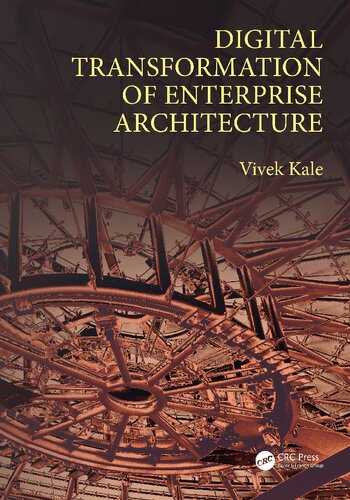

Most ebook files are in PDF format, so you can easily read them using various software such as Foxit Reader or directly on the Google Chrome browser.
Some ebook files are released by publishers in other formats such as .awz, .mobi, .epub, .fb2, etc. You may need to install specific software to read these formats on mobile/PC, such as Calibre.
Please read the tutorial at this link. https://ebooknice.com/page/post?id=faq
We offer FREE conversion to the popular formats you request; however, this may take some time. Therefore, right after payment, please email us, and we will try to provide the service as quickly as possible.
For some exceptional file formats or broken links (if any), please refrain from opening any disputes. Instead, email us first, and we will try to assist within a maximum of 6 hours.
EbookNice Team

Status:
Available0.0
0 reviews"In this book, Vivek Kale makes an important contribution to the theory and practice of enterprise architecture … this book captures the breadth and depth of information that a modern enterprise architecture must address to effectively support an agile enterprise. This book should have a place in every practicing architect's library."
―John D. McDowall, Author of Complex Enterprise Architecture
Digital Transformation of Enterprise Architecture is the first book to propose Enterprise Architecture (EA) as the most important element (after Business Models) for digital transformation of enterprises. This book makes digital transformation more tangible by showing the rationale and typical technologies associated with it, and these technologies in turn reveal the essence of digital transformation. This book would be useful for analysts, designers and developers of future-ready agile application systems.
This book proposes that it is the perennial quest for interoperability & portability, scalability, availability, etc., that has directed and driven the evolution of the IT/IS industry in the past 50 years. It is this very quest that has led to the emergence of technologies like service-oriented, cloud, and big data computing. In addition to the conventional attributes of EA like interoperability, scalability and availability, this book identifies additional attributes of mobility, ubiquity, security, analyticity, and usability.
This pragmatic book:
Digital Transformation of Enterprise Architecture proposes that to withstand the disruptive digital storms of the future, enterprises must bring about digital transformation, i.e. a transformation that affects an exponential change (amplification or attenuation) in any aspect of the constituent attributes of EA. It proposes that each of these technologies (service-oriented, cloud, big data, context-aware, IoT, blockchain, soft, and interactive computing) bring about digital transformation of the corresponding EA attribute viz. interoperability, scalability, availability, mobility, ubiquity, security, analyticity, and usability.